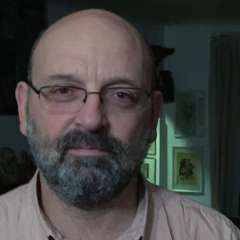The last online performance in the “Great Performers in Recital at Tanglewood” series, featured violinist Joshua Bell and pianist Jeremy Denk in two Beethoven sonatas. The protagonists have been playing together for decades and they have been frequent visitors to Tanglewood – apparently, Bell has been a guest here every year since 1989! Instead of recording in the Linde Center, the two were supposed to perform this summer in the Koussevitzky Shed – together with their friend, cellist Steven Isserlis – Beethoven’s Triple Concerto in a show celebrating the 100th anniversary of Isaac Stern’s birth.
Denk, who recently turned fifty, and the slightly older Bell are at a point in their careers when they are less interested in displaying their amazing virtuosity. Instead, they focused on bringing out the poetry that imbues so many Beethovenian musical lines. In fluid rhythmical conditions, their playing was in perfect harmony, both artists fully agreeing on different agogic stresses.
Beethoven’s Spring Sonata, composed at the very beginning of the 19th century, is not only anchored in the tradition of Haydn and Mozart, but is also foreshadowing the music of Schubert and Mendelssohn. Bell and Denk made sure the listeners are aware of all these connections. They emphasized how much the Adagio molto espressivo invokes one of Mozart’s arias, while prefiguring Schubertian soulfulness. In their rendition, the finale brought back reminiscences of one the Mozartean rondos, perhaps hiding mischievous thoughts under its elegant surface. The brief Scherzo had a Haydnesque, witty, quality.
The Sonata no. 9 is one of the most beloved Beethovenian opuses in any genre. Composed in 1803, it was eventually dedicated to Rodolphe Kreutzer, a French violinist who never played the work and would have been forgotten today if his name were not associated with Beethoven’s (and Tolstoy’s or Janáček’s) chefs-d’oeuvre. The music emanates, especially in the first movement, the same aura of power that characterizes the Eroica Symphony, the opus immediately following the Kreutzer Sonata in Beethoven’s output. A successful rendition is defined by the duo’s approach to the introductory Andante sostenuto. Denk and Bell handled exquisitely the transition from the major chords intoned by the solo violin in the first four bars to the piano’s minor key statement to the convergence of the two streams into a half-step resolution, the kernel from which the musical universe of this work will grow. There were other remarkable moments during Saturday night’s presentation, such as the rendition of the chorale-like second theme in the same first movement, or, in the Andante con variazioni, the contrast between the insouciance of the long sequence of thirty-second notes in the second variation and the bitterness prevailing in the third one, in minor mode.
Like other shows in this series, this recital lasted just about an hour. In the post-COVID-19 world of intermission-less performances with real public, such a length seems reasonable. For the purely streaming ones, this kind of time constraint really does not. On the contrary, avid couch-bound spectators are ready for more.
This performance was reviewed from the video live stream.


